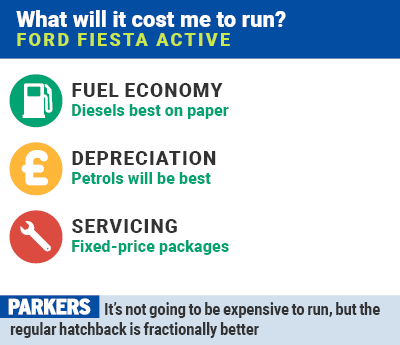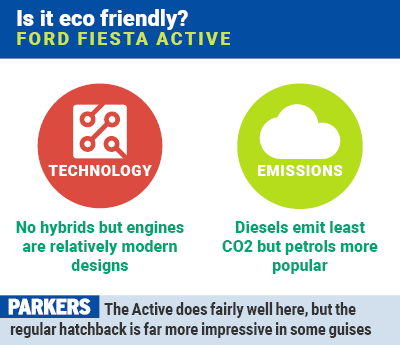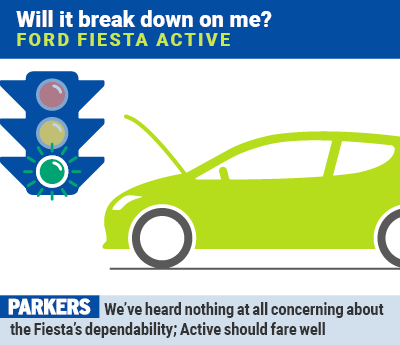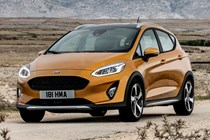Ford Fiesta Active (2018-2022) running costs and reliability

Miles per pound (mpp) ⓘ
| Petrol engines | 5.9 - 8.4 mpp |
|---|---|
| Diesel engines | 6.9 - 8.4 mpp |
Fuel economy ⓘ
| Petrol engines | 40.4 - 57.6 mpg |
|---|---|
| Diesel engines | 54.3 - 65.7 mpg |
- Should prove fairly cheap to run
- Low tax and fuel bills expected
- Set to hold value as well as ST-Line

The running costs of the Ford Fiesta Active aren’t going to break the bank. The 1.5 diesel is the best bet for maximum mpg, with a claimed 64.2-70.6mpg possible if you’re saintly with your right foot. However, in real-world conditions and without doing big motorway miles (that don’t really suit the Active), the Ecoboost petrol should return decent economy too. Its claimed figure is between 46.3mpg (for the automatic) and 56.5mpg depending on power output. Expect real-world consumption of 45mpg for the petrol, and 55mpg for the diesel.
With the exception of the automatic petrol, all models emit lower than 120g/km of CO2, meaning VED car tax and company car tax will remain manageable, if not class-leading.
We’re expecting resale values to be similar to that of the ST-Line version of the regular Fiesta.

There’s no hybrid version on hand to get CO2 emissions down to the class best, but at 103g/km for the low-powered 1.5 diesel it could be a lot worse too.
The worst model for carbon dioxide output is the automatic 1.0-litre EcoBoost petrol, and this emits 139g/km – still not exactly earth-endangering in isolation. All others weigh in at under 120g/km.
It’s worth noting here that the regular Fiesta hatchback does have certain versions that are much more impressive for emissions, with an 82g/km figure quoted for some diesels.
- Shouldn’t prove an issue
- Fiesta can be relied upon
- No recalls for current model

There’s little reason to be concerned about the Ford Fiesta Active’s reliability. It’s built using parts shared across the rest of the Fiesta range and indeed with many other Fords, so it’s all tried-and-tested. We’ve heard no horror stories and there haven’t been any major DVSA recalls either.
The only exception here are the LED headlights, which are new on the Fiesta, but the technology isn’t so we don’t predict these being troublesome.
Ongoing running costs
| Road tax | £195 |
|---|---|
| Insurance group | 7 - 20 |
Get an insurance quote with

|
|



